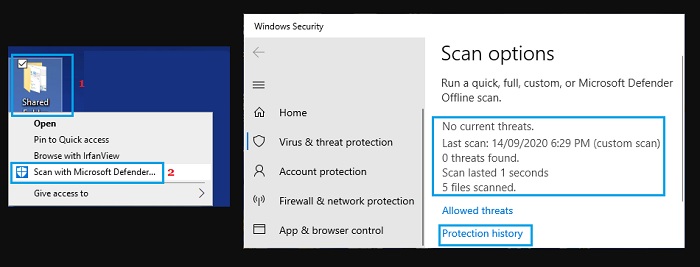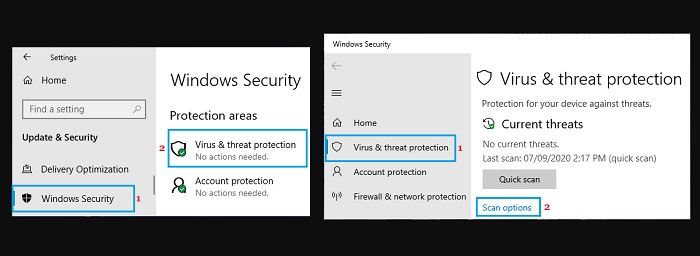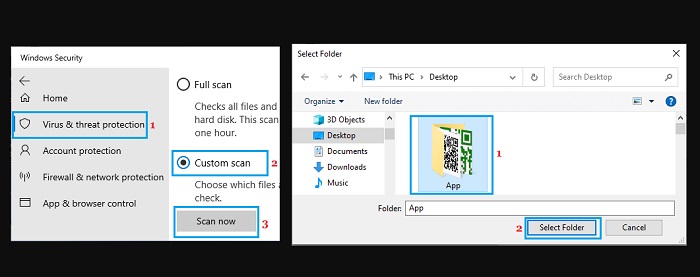Tips: Scan Files and Folders for Virus In Windows 10
Table of Contents
Scan Files and Folders for Virus In Windows 10, You can find ways to scan files and folders for viruses or malware with Microsoft Security in the following two different methods. Microsoft Security is pre-installed on all Windows 10 computers.
Scan files or folders for viruses in Windows 10
Windows Security (formerly known as Windows Defender and Microsoft Security) should automatically scan for malware as soon as you open a file on your computer.
This happens only if you do not have a third-party antivirus software program installed on your computer and the “Real-time Scan” feature of the Windows Security Center is turned on and running on your computer.
If real-time scanning in Windows Security is turned off, you can still use Windows Security Manual Scan to scan any files or folders on your computer for viruses or malware.
If you are using a third-party antivirus program, you should still be able to use the “Custom Scan” feature provided in the Windows Security Center to scan files for viruses or malware on your computer.
The custom scan function in Windows Security can also be used to scan files and folders located in USB flash drives and storage drives connected to the computer.
Manually scan files or folders for viruses
If you do not have third-party antivirus software installed on your computer, you should be able to scan for malware by right-clicking on any file or folder.
Locate the File/Folder that you want to scan for virus or malware. Right-click on the File/Folder and select Scan with Microsoft Defender option.

Note: If the May 2020 update is not installed on your computer, then right-click option will display “Scan with Windows Defender”.
On the Windows Security screen, you will be able to see the results of the malware scan.
If the file or the folder is clean, you will see “No Current Threats”. If a virus or malware is detected, you will see Threats Found alert from Microsoft Defender, along with the names of affected files.
How to use Microsoft Defender to remove malware
If malware is detected, just click the “Start Action” button and the Windows Security Center will begin the process of removing the malware from the affected file or folder.
If you are interested in getting more information about deleted malware, please click on the protection history option located below the scan results (see the image above).
Use Windows Security Custom Scan to scan files or folders for viruses
As mentioned above, even if you have a third-party antivirus program installed on your computer, you should be able to use the custom scan feature of the Windows Security Center to scan files for viruses.
Go to Settings > Update & security > Windows Security > Virus & Threat Protection. On the next screen, click on Scan Options.

Select the Custom Scan option and click on Scan Now. On the next screen, select the Folder that you want to scan for malware.

In addition to custom scans, Windows Security Center can also perform a thorough offline scan of all files, programs, and applications on your computer.
More: Do you have high CPU errors? Please refer to the article on how to fix the error MsMpEng.exe High CPU Usage in Windows 10.


